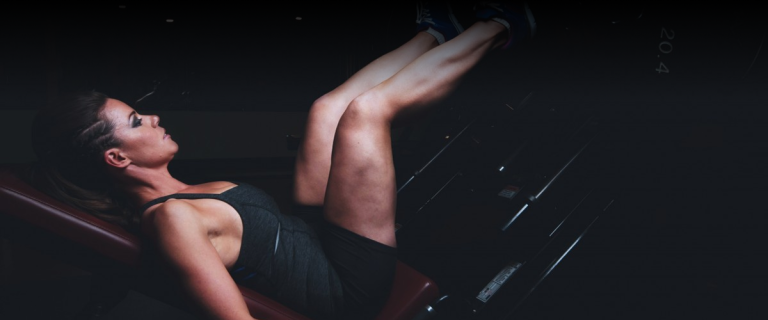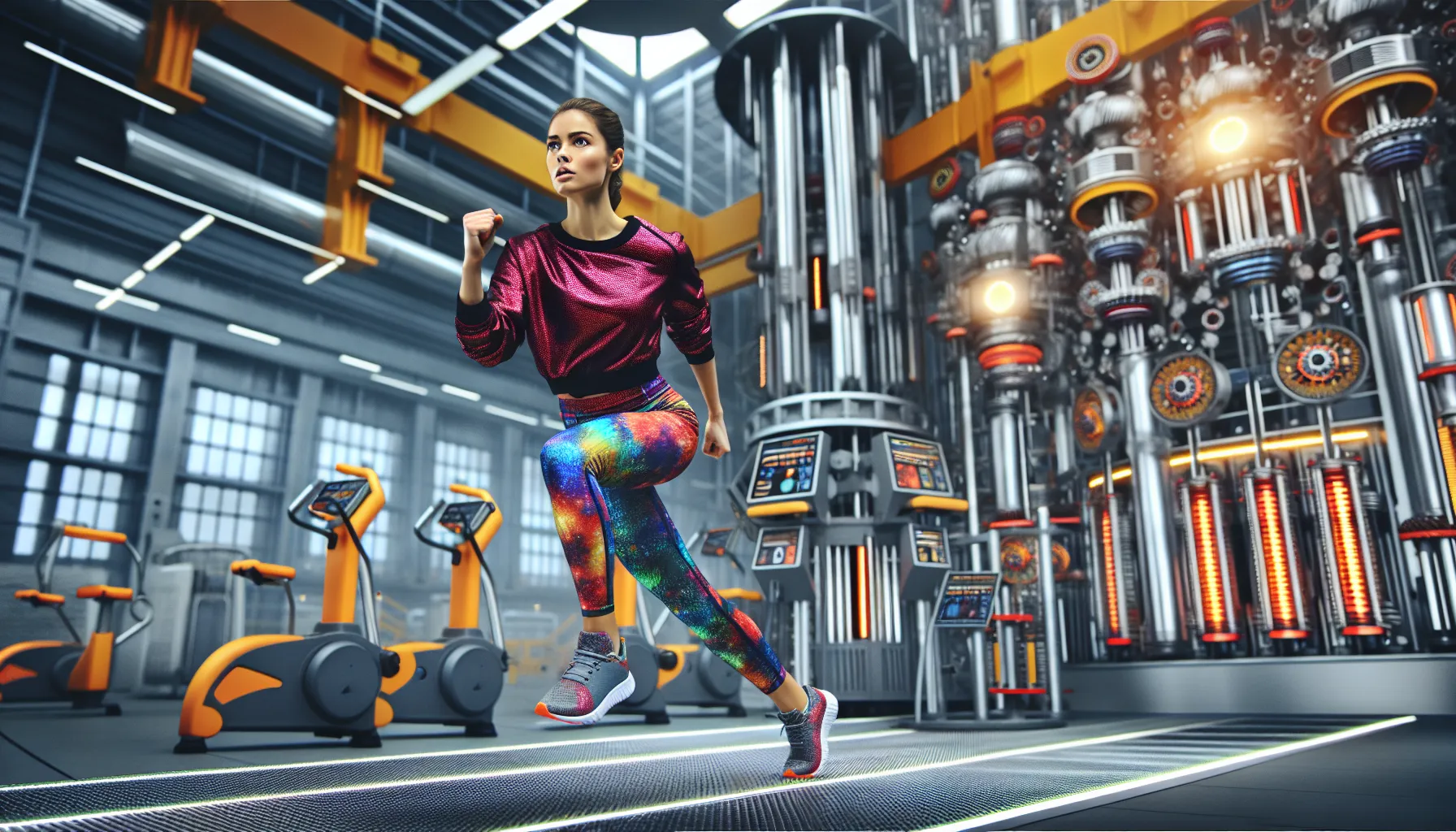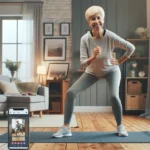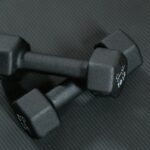When we hit the gym or step outside for a run we want shoes that can keep up with every move. The right pair doesn’t just boost our performance—it helps protect us from injuries and keeps us comfortable through every squat jump and sprint.
With so many options out there it’s easy to feel overwhelmed by all the choices. We know how important it is to find workout shoes that match our goals and routines. Let’s break down what makes a shoe truly great for working out so we can step into every session with confidence.
What to Look for in the Best Shoes for Working Out
Finding the best workout shoes can be a game changer for our fitness experience. The right pair supports our goals and minimizes risk for injuries. Let’s break down key factors to consider so we can choose wisely and maximize every gym session.
Fit and Comfort
A well-fitting shoe is non-negotiable for any workout. Shoes that are too tight cause blisters and pinching while loose ones can lead to dangerous slips. We look for a snug fit around the heel with enough room in the toe box for our toes to flex and splay. If we notice any pressure points during a try-on, this is a sign the model may not work for us.
Retailers often use terms like “true to size” which means the shoe closely matches standard foot measurements. For those of us with wide or narrow feet, brands that offer various width options provide a better fit. The type of insole also matters. Some workout shoes come with removable insoles, allowing us to swap in custom orthotics or thicker inserts for added cushioning.
Testing for comfort goes beyond a quick walk down the store aisle. We recommend mimicking workout motions—like lunges or short jogs—to ensure cushioning feels balanced and support remains consistent. If our workouts run over an hour, features like padded collars and seamless interiors prevent irritation and keep us focused on the session rather than the fit of our shoes.
Support and Stability
Support is crucial, especially when we’re lifting weights or performing high-impact movements. The best workout shoes offer lateral support, which protects our feet during side-to-side motions like agility drills. A firm heel counter (the part that cups our heel) helps anchor our ankles and stabilize our stride, which is essential for activities like squats or box jumps.
Stability often comes from the shoe’s sole construction. Shoes with a wide base and minimal heel-to-toe drop (meaning the difference in height from the heel to the forefoot) keep us grounded. For those into CrossFit or circuit training, shoes labeled as “cross trainers” tend to blend stability with enough flexibility for mixed exercises. Cushioning levels also affect support. Too much cushioning can sometimes make shoes feel “wobbly” during heavy lifts, while a firmer sole creates a secure foundation.
Shoppers should also look for reinforced eyelets and secure lacing systems, which help keep our feet locked in place. Flat outsoles or shoes with specialized tread patterns add extra traction, reducing the risk of slipping during dynamic workouts on slick gym floors.
Breathability and Materials
The material makeup of our workout shoes can impact not only performance but also how fresh our feet feel after long sessions. Synthetic mesh uppers are popular because they let air circulate. This helps wick away sweat and reduces the chance for odors or skin irritation. Some premium models use engineered knit materials, which hug our feet while still allowing air to pass through.
While leather or synthetic leather can offer more durability, these materials tend to trap heat. For those of us who sweat a lot or exercise in warm environments, prioritizing ventilation is a must. Many shoes include moisture-wicking linings or antimicrobial treatments to further combat odor and bacteria.
The quality of the sole is equally important. Lightweight EVA foam offers cushioning without adding extra bulk, while rubber outsoles increase durability and maintain grip over time. Durable toe caps and overlays reinforce high-wear zones, making sure the shoes last even with frequent gym use.
Material advances have also led to more eco-friendly options, with some brands incorporating recycled plastics or plant-based fibers. These options are a win for those who want sustainability without compromising on quality.
Versatility for Different Workouts
Many of us don’t stick to just one training style, so a versatile shoe makes sense. The best shoes for working out accommodate a range of activities—think treadmill runs, plyometric drills, weightlifting, and fitness classes. Flexible midsoles paired with supportive uppers allow easy transitions between different exercise modes without changing shoes.
Versatile shoes should have moderate cushioning—enough to absorb impact when running or jumping but firm enough for stability during weight training. Outsoles with multi-directional tread patterns grip the gym floor during lateral movements or sprints, while also handling the street for outdoor workouts.
For group fitness classes like HIIT or boot camp, shoes that blend lightweight construction with sturdy arch support keep us agile and protected. If our routine shifts between cardio and strength, all-purpose trainers or “multi-trainers” are ideal. They may not offer the specialized features of a dedicated running or lifting shoe, but they deliver reliable all-around performance.
Brands now label many of their products as “training shoes” or “cross trainers”—these models provide a balance between comfort, support, and adaptability. It’s important to read product descriptions carefully so we can match the shoe’s design to our routine and avoid buying overly specialized shoes that might limit our workout options.
Top Picks: Best Shoes for Working Out
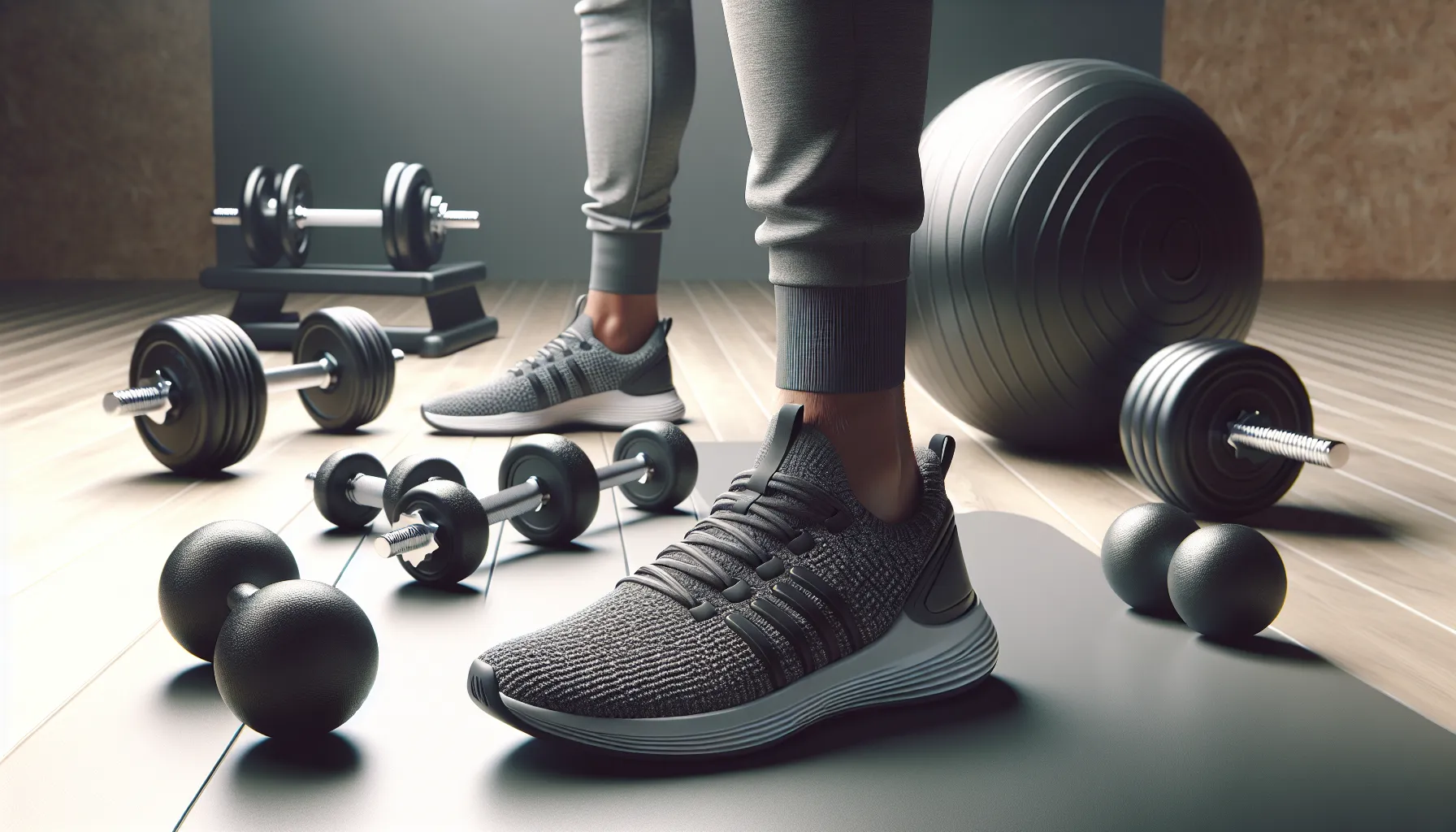
With so many choices on the market, zeroing in on the top shoes for every training style can feel overwhelming. We have tested and reviewed leading models across fitness categories to help make your decision easier. Here are our picks for the best shoes for working out, designed to deliver comfort, performance, and outstanding value.
Best Overall Workout Shoe
For an all-around winner, we recommend the Nike Metcon 9. This model stands out due to its balanced blend of cushioning, stability, and hardwearing structure that adapts to nearly any workout. The upper uses a breathable mesh overlay that keeps feet cool during intense sessions, while a reinforced heel and wide base improve stability for lifts and agility drills alike. The Metcon 9 also offers a flexible forefoot, which supports natural movement—ideal for runners who mix in cardio with strength training.
Pros:
- Stable platform for lifting weights
- Durable outsole grips well on various surfaces
- Breathable with tough materials
Cons:
- Slightly heavier than shoes designed for running
- May feel too stiff for those needing maximum flexibility
Compared to others in this category, the Metcon 9 ticks every box for those who want versatility without compromise. Its price is on the higher end but delivers long-term value for people who hit the gym for varied training.
Best for Running and Cardio
For those focused on treadmill miles or frequent cardio, the Brooks Ghost 15 remains a top performer. This shoe uses DNA Loft cushioning—a proprietary foam technology by Brooks—to deliver plush underfoot comfort and ample shock absorption. The engineered mesh upper boosts ventilation, making long sessions more comfortable.
The Ghost 15 features a segmented crash pad, which smooths out transitions from heel to toe and helps prevent harsh impacts on joints—a big deal for anyone clocking high mileage. At 9.1 ounces for men and 8.1 ounces for women, it is light enough to not slow us down.
Pros:
- Excellent cushioning for long-distance cardio
- Lightweight, breathable upper
- Smooth transition and shock absorption
Cons:
- Less lateral support for side-to-side movements
- Not built for heavy strength training
Among running-oriented shoes, the Brooks Ghost 15 offers a winning balance of comfort, support, and durability at a midrange price point, making it a favorite for cardio lovers.
Best for Weightlifting
When the focus is pure strength, the Adidas Adipower 3 stands out for lifters. It features a raised heel (about 22mm) and a firm TPU (thermoplastic polyurethane) midsole, both designed to promote optimal lifting mechanics and stability under heavy loads. The shoe’s wide, flat base gives superior grip and keeps us anchored during squats, deadlifts, and Olympic lifts.
Lockdown comes from a combination of a lace system and a sturdy instep strap, minimizing foot movement when form matters most. The Adipower 3 uses a synthetic leather upper for durability and support, so the shoe holds up under intense use.
Pros:
- Raised firm heel increases squat depth and form
- Secure lockdown with strap and laces
- Solid traction for heavy lifts
Cons:
- Not versatile for cardio or running
- Heavier, with less flexibility than crosstrainers
If weightlifting is core to our routine, this model justifies its higher price by prioritizing the elements that matter most for power and form in the gym.
Best for HIIT and Cross-Training
For those who regularly mix agility, jumping, and circuit work, the Reebok Nano X3 is a reliable option. This shoe has a durable rubber outsole and a flexible forefoot, which means it handles explosive lateral moves and quick directional changes with ease.
The X3 includes Reebok’s signature Floatride Energy Foam, adding responsive cushioning for sprints and jumps without sacrificing stability for lifts. The breathable upper keeps feet from overheating during long HIIT sessions, and the reinforced sides add support where it counts.
Pros:
- Versatile for jumping, running, and light lifting
- Responsive cushioning helps with impact absorption
- Durable materials withstand high-intensity use
Cons:
- May run a bit narrow for some
- Less ankle support than some cross-trainers
Compared to its rivals, the Nano X3 is priced at the mid-to-high end but stands out for durability and versatility—key features for anyone switching between workout types.
Best Budget-Friendly Option
Finding a quality workout shoe on a budget can be tough, but the New Balance 520v8 surprises us with its value. With underfoot cushioning and all-around support, this shoe transitions easily from treadmill to mat work.
The lightweight EVA foam midsole absorbs impact, and the mesh upper provides good airflow. The outsole is simple but durable enough for regular workouts, though it does not offer the advanced grip or reinforcement found in pricier shoes.
Pros:
- Affordable price point
- Decent comfort and cushioning
- Lightweight and easy to wear out of the box
Cons:
- Basic grip and stability may limit heavier training
- Materials are less luxurious than premium models
Within the budget category, the 520v8 stands out for reliability and comfort without overspending, making it a solid pick for beginners or casual gym-goers.
Best for Wide Feet
Comfort for wider feet often gets overlooked, but the ASICS Gel-Kayano 30 (Wide) nails it. This shoe is offered in true wide sizing and uses an external heel clutch and plush midsole to prevent crowding or pinching. The Gel-Kayano series is known for its stability, thanks to ASICS’ 4D Guidance System, making it ideal for both cardio and low-impact strength sessions.
Its seamless mesh upper stretches to accommodate natural foot expansion, and the gel cushioning delivers long-lasting comfort—a must for long workouts.
Pros:
- Wide toe box and real wide sizing
- Plush cushioning for sensitive feet
- Reliable for overpronators and stability needs
Cons:
- Heavier than minimalist shoes
- May be too structured for those who prefer flexible designs
The Kayano 30 (Wide) tops our list for anyone with wide feet or those requiring extra support, offering fit and performance rarely matched in this specific category.
Features and Specifications
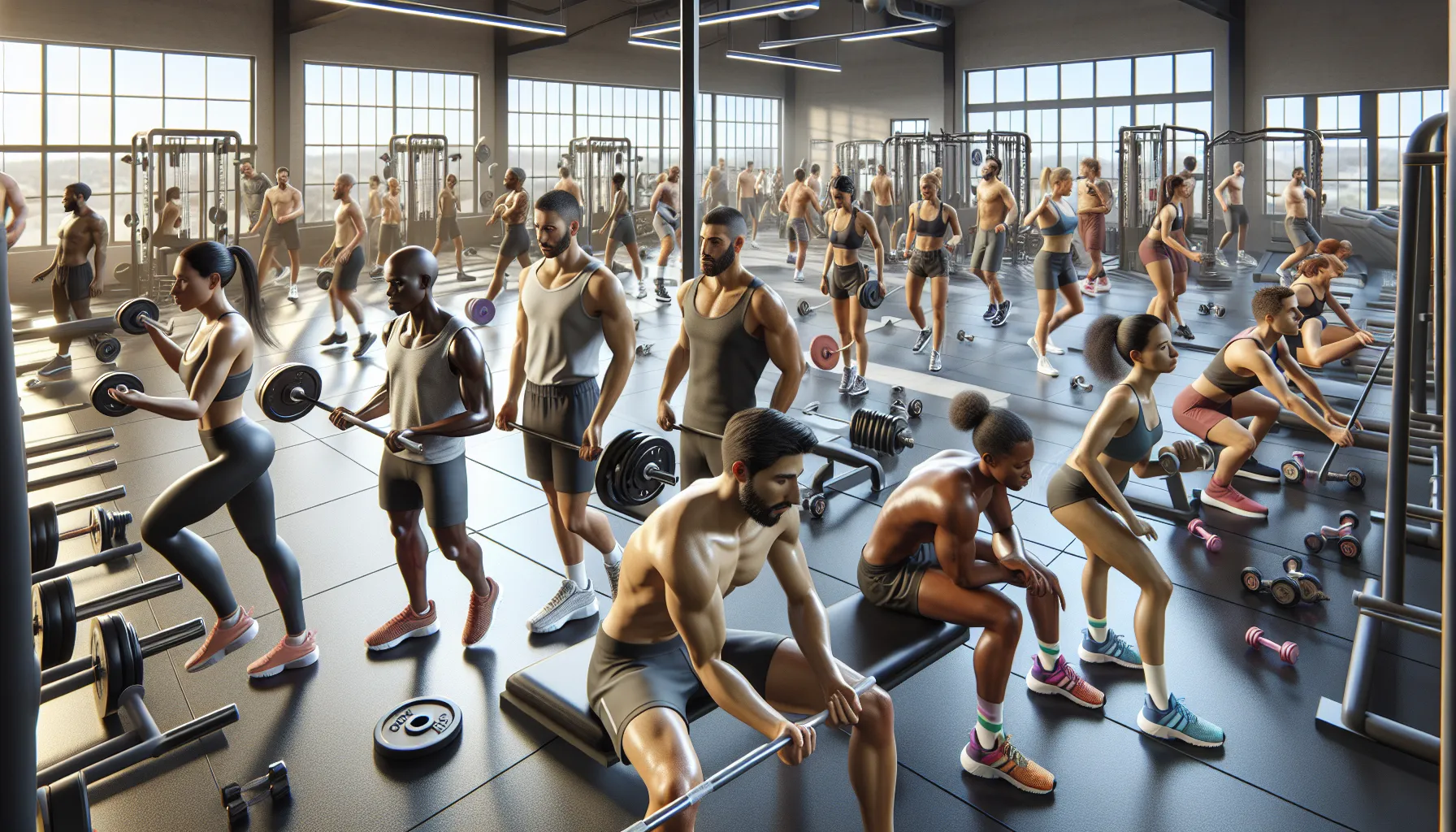
When looking at the best shoes for working out, it helps to break down the features and technical details that set top contenders apart. Understanding specifications gives us insight into how each shoe type meets the demands of different workouts and personal preferences.
Sole and Traction
The sole of a workout shoe is fundamental to performance and safety. Most of the top options we mentioned use a multi-layered rubber or foam outsole that grips both gym floors and outdoor surfaces with ease. For example, the Nike Metcon 9 and Reebok Nano X3 feature flat but textured soles with unique tread patterns. This provides steady traction whether we are performing deadlifts, sprints, or plyometrics.
Weightlifting-specific shoes like the Adidas Adipower 3 have a raised heel and rigid sole. This design improves force transfer and stability during heavy lifts. Running and cardio-oriented shoes such as the Brooks Ghost 15 offer broader, more flexible soles that absorb shock while allowing the foot to roll smoothly from heel to toe. Many brands use proprietary rubber compounds or flex grooves. These maximize grip and encourage natural foot movement.
Shoes for high-intensity interval training and cross-training need traction to prevent unwanted slips during movements like lunges and side shuffles. The Reebok Nano X3 uses a grippy outsole that wraps up the sides of the shoe for added friction during quick lateral movements. We find that having deep tread grooves and reliable rubber composition helps us trust the shoe when changing direction rapidly.
Cushioning Technology
Modern workout shoes use a variety of cushioning systems to balance impact protection and ground feedback. The Brooks Ghost 15, for example, features DNA Loft V2 cushioning. This is a proprietary blend of EVA foam and other materials that provide both softness and resiliency, making it excellent for running on hard surfaces.
Shoes like the Nike Metcon 9 take a firmer approach. The drop-in midsole is relatively stiff for stability during lifts but still provides some shock absorption for jumps and sprints. This suits people who alternate between heavy weights and dynamic moves in one session.
Meanwhile, the ASICS Gel-Kayano 30 (Wide) utilizes the brand’s well-known GEL technology in the heel and forefoot. The silicon-based gel inserts minimize impact and help with smoother transitions, which benefits runners and walkers with joint concerns. For more general training, we look for EVA or dual-density foam midsoles that strike a balance between response and comfort.
Proprietary foams like Adidas’s Lightstrike, New Balance’s Fresh Foam, and Reebok’s Floatride Energy each try to provide that Goldilocks mix—not too spongy, not too hard. When evaluating shoes, we check the thickness and placement of these cushion elements to match our activity needs.
Durability
Longevity is always a concern when we invest in workout shoes. Durable construction means the shoe can withstand friction, pressure, moisture, and repetitive use. The Nike Metcon 9 impresses with a reinforced mesh upper and abrasion-resistant rubber in high-wear areas. This prevents premature tearing when performing rope climbs or box jumps.
For running shoes like the Brooks Ghost 15, blown rubber outsoles and engineered mesh uppers are designed to last hundreds of miles without losing structure. The Adidas Adipower 3 stands out in the weightlifting category. Its synthetic leather upper and stiff TPU heel cup are built to handle daily heavy sessions without stretching out.
Budget-friendly options, such as the New Balance 520v8, often use fewer expensive materials but maintain durability with no-sew overlays and thick outer soles. We notice that frequent gym-goers might see wear and tear after six to twelve months, especially in more affordable models. Still, premium shoes usually deliver a longer useful life.
Checking seam stitching, overlay bonding, and sole thickness gives us a quick idea of each shoe’s projected lifespan. Rotating between two pairs can extend longevity, particularly if we switch activities frequently or train outdoors.
Design and Style Options
Design matters for both function and motivation. Many workout shoes offer a wide range of colorways and visual styles, letting us personalize our look without giving up performance. Nike and Adidas frequently drop limited-edition color packs and collaborations, keeping their models fresh and eye-catching.
For those needing a more subdued style, brands like ASICS and New Balance offer simple, neutral palettes. The ASICS Gel-Kayano 30 (Wide) often comes in understated options but does not ignore functional design, offering reflective elements for outdoor safety.
Functional design elements can also set shoes apart. Pull tabs for easy entry, gusseted tongues to keep out debris, and wide toe boxes for a more natural splay are all features we look for in comfort-focused models. Many modern shoes include removable insoles, making it easier to replace with custom orthotics.
Shoes designed for high-impact or agility work usually offer a sleeker profile with less bulk around the ankle, while weightlifting shoes show off a chunkier, more rigid silhouette for that locked-in feel. No matter our training needs, the current market ensures there are both flashy and understated designs that will not compromise on quality or fit.
Pros
Choosing the best shoes for working out brings a host of distinct benefits to any fitness routine. The right pair not only enhances performance but also helps prevent discomfort and injury across a range of activities. Here’s a look at the advantages that stand out most.
Exceptional Comfort
We immediately notice how top-rated workout shoes elevate comfort during any session. High-quality models like the Brooks Ghost 15 and ASICS Gel-Kayano 30 (Wide) use advanced cushioning technologies that adapt to foot movement, providing plush support. Features such as padded collars, breathable mesh uppers, and moisture-wicking linings help keep feet cool and minimize irritation. This attention to comfort allows us to focus fully on training, whether it is a short jog or an hour-long HIIT class.
Additionally, a well-designed toe box offers ample space, reducing the chance of blisters and hot spots. Runners and lifters alike benefit from outsoles that absorb shock efficiently, making impact-heavy movements far more manageable. A shoe that fits properly also prevents slipping inside the shoe, which can distract or even derail a good workout. For those who spend long hours at the gym, exceptional comfort in their footwear can make or break their commitment to regular exercise.
Reliable Support
Support is a non-negotiable feature in the best workout shoes, especially as it relates to injury prevention and optimal biomechanics. Shoes such as the Nike Metcon 9 and Adidas Adipower 3 shine with their structured heel counters, wide bases, and lateral support features. These elements keep our feet stable during lateral movements and high-impact landings, reducing strain on ankles, knees, and hips.
We also appreciate the inclusion of firm midsoles and reinforced arch support, particularly in shoes designed for weightlifting or HIIT. A secure fit around the midfoot and heel prevents excessive sliding and helps us maintain proper form, even as fatigue sets in. This reliable support is vital for anyone transitioning between different exercises or adding weight to their lifts.
People with specific needs, like those with flat feet or a tendency to overpronate (roll the foot inward), benefit greatly from brands that offer targeted stability technologies. The right support in our workout shoes not only safeguards against common injuries but empowers us to take on more challenging routines with confidence.
Suitable for Multiple Workout Types
Versatility stands out as one of the most practical benefits of today’s best workout shoes. Whether we’re running on the treadmill, joining a circuit class, or hitting the squat rack, top picks like the Reebok Nano X3 and Nike Metcon 9 deliver consistent performance. Flexible outsoles, multi-directional grip patterns, and a balance between cushioning and firmness enable these shoes to adapt seamlessly between cardio, strength, and functional training.
Choosing shoes that perform well across various activities means we do not need a separate pair for each workout, saving both time and money. For example, the Reebok Nano X3—a favorite among cross-trainers—excels in HIIT, short-distance runs, and weightroom exercises. This all-in-one solution is ideal for anyone following mixed training plans or fitness classes that require quick transitions.
We also find that versatile workout shoes tend to last longer since they are designed to handle a range of motions and intensities. Lightweight construction paired with durable materials ensures daily use does not quickly wear them out. For those with evolving fitness goals or routines, multi-purpose shoes offer the flexibility to keep up without compromising performance or safety.
Cons
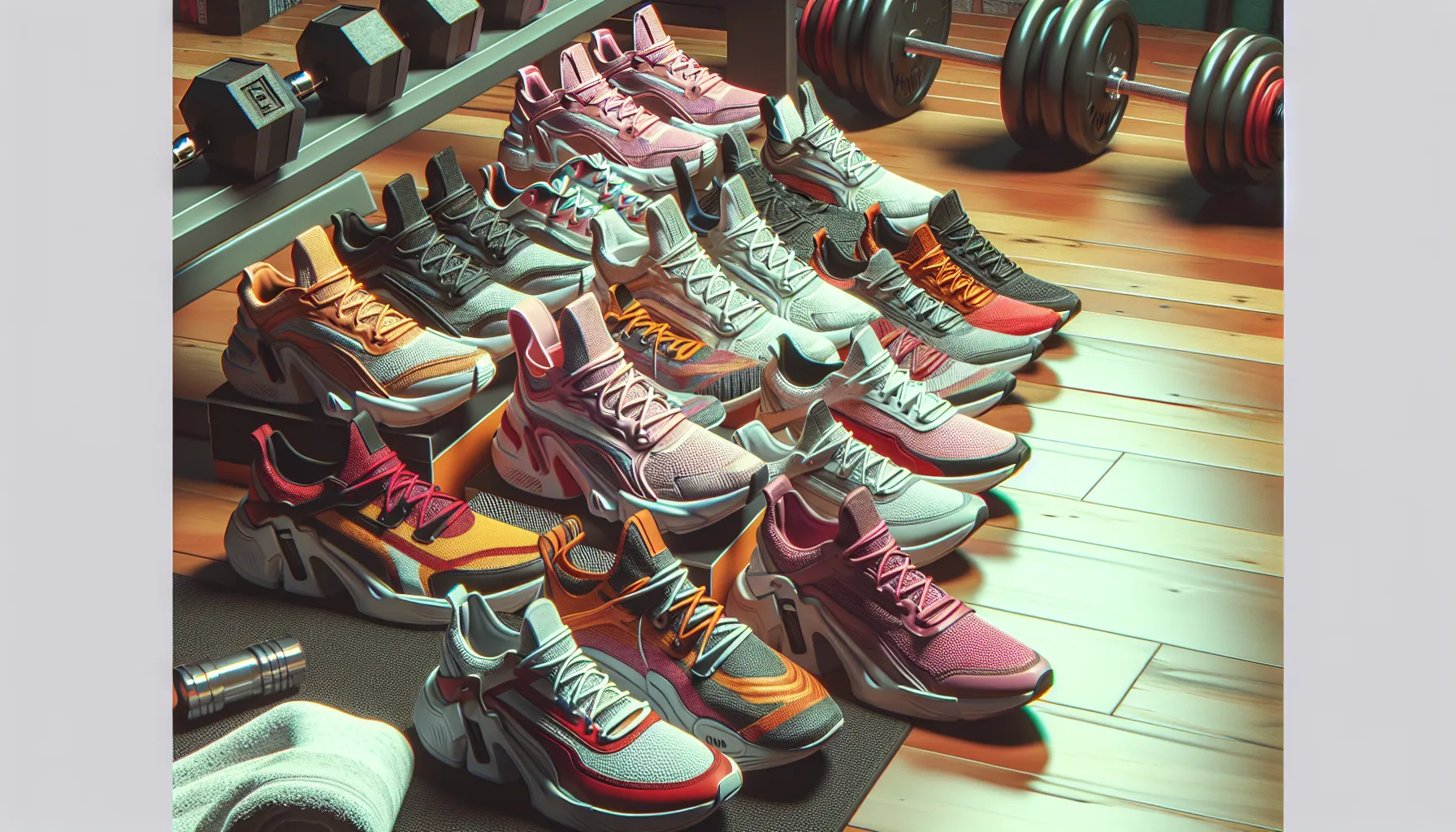
While top-rated workout shoes bring significant benefits to our training routines, they are not without drawbacks. Here we examine some of the most common disadvantages, which can affect both our wallet and our workout experience.
Price Point
Premium workout shoes often come with a high price tag. Many of the best options, such as the Nike Metcon 9 and Adidas Adipower 3, are priced between $120 and $200. This can be a stretch for those of us looking to invest in other gym essentials or for beginners not ready to commit fully. Budget-friendly models like the New Balance 520v8 offer some relief, but often we sacrifice advanced support or durability for a lower cost.
We also notice that frequent athletes or those engaged in multiple sports may need different shoes for running, lifting, and cross-training. The cost quickly multiplies if we try to match our shoes to each activity. Replacement cycles add further expense because even the most durable shoes will wear down after regular use, especially when subjected to high-impact workouts or outdoor conditions.
| Model | Approx. Price (USD) |
|---|---|
| Nike Metcon 9 | $150 |
| Brooks Ghost 15 | $140 |
| Adidas Adipower 3 | $200 |
| Reebok Nano X3 | $140 |
| New Balance 520v8 | $70 |
| ASICS Gel-Kayano 30 W | $160 |
The investment can be worthwhile if we use our shoes daily. However, for the more casual gym-goer or those with a limited budget, the upfront cost may outweigh the benefits.
Sizing Issues
Fit can be highly inconsistent across brands and specific models. Even with careful measurement, many of us experience differences in sizing that lead to returns or exchanges. For example, Nike and Adidas shoes tend to run narrow, which might feel restrictive for those with average or wide feet. On the other hand, brands like New Balance and ASICS offer wide-width options, but stock availability can be hit or miss.
Athletes with unique foot shapes may struggle to find a shoe that accommodates high arches, flat feet, or bunions without causing discomfort. Incorrect sizing can lead to blisters, rubbing, or instability during certain movements.
Some shoes, especially those designed for special activities like weightlifting, have a minimal break-in period but may still require adjustment time for us to feel fully comfortable. Unfortunately, not every store offers the chance to try on shoes before buying, and online purchases can turn into a hassle if fit is off by even half a size.
Limited Color or Style Selections
While function is our top priority, we still appreciate shoes that look good and express our personality. Surprisingly, many of the best performance-focused shoes offer limited choices when it comes to colorways and styles. Models like the Adidas Adipower 3 or the Brooks Ghost 15 often come in just a handful of classic hues, leaving us wanting more variety.
Seasonal releases sometimes introduce new colors, but popular sizes and shades quickly sell out. For those of us who prioritize fashion or like to coordinate our footwear with workout outfits, these restrictions can be disappointing. Some brands focus on neutral or minimalist styles, which may not appeal to everyone.
Athletes with non-standard size requirements, such as extra wide or extra small feet, often face an even narrower selection in terms of color and design. While brands occasionally offer customization for an additional fee, this raises the overall cost and may result in longer wait times for delivery.
For those who value aesthetics as much as functionality, limited style ranges might make it difficult to find a pair of shoes that checks every box.
User Experience and Performance
When it comes to workout shoes, user experience goes beyond just the first try-on. The best options stand out for day-to-day reliability, lasting comfort, and adaptability during varied routines. Let’s dive into how our recommended picks handle real-life challenges in the gym and on the move.
Comfort During Extended Training
Extended sessions test a shoe’s fit, breathability, and overall comfort more than anything else. During long workouts, we notice that shoes like the Brooks Ghost 15 and ASICS Gel-Kayano 30 (Wide) deliver noteworthy plushness underfoot. The DNA Loft V2 cushioning in the Brooks Ghost 15 gives a soft yet supportive ride that helps reduce fatigue over long distances or back-to-back classes. We appreciate the ASICS Gel-Kayano 30’s wide fit option, as it minimizes pressure points for those of us with broader feet—something that becomes especially crucial in hour-long routines or circuit training.
We also notice that breathable mesh uppers work wonders for temperature control. Whether we are running sprints on the treadmill or grinding through heavy lifts, well-ventilated shoes reduce overheating and help prevent sweaty discomfort. The New Balance 520v8, while affordable, still provides decent breathability for the price, making it a sensible choice for entry-level athletes wanting all-day comfort without the premium cost.
One downside is that highly cushioned shoes occasionally feel too soft or unstable if our workouts include sudden, lateral moves or heavy lifts. Some users have reported heel slippage or a slightly loose fit after several hours of use in models geared toward running rather than cross-training. This makes it important to prioritize a lockdown fit if your sessions extend beyond simple cardio.
Stability in High-Impact Workouts
High-impact workouts like HIIT, plyometrics, or weightlifting demand a solid foundation and reliable lateral support. The Nike Metcon 9 stands out for its wide heel platform and firm midsole, which help us feel anchored during box jumps and heavy squats. Its rope guard on the outsole also offers grip during climbing movements, boosting our confidence in dynamic exercises.
For those of us focusing on Olympic lifts or regular barbell training, the Adidas Adipower 3’s raised heel and rigid support keep our posture correct and ensure that power transfers smoothly from the floor. We appreciate shoes with stability features such as a firm heel counter and additional side supports—these elements reduce the risk of ankle roll and reinforce proper foot alignment, especially when fatigue sets in during high-repetition sets.
That said, stiffer shoes like dedicated lifters may feel less forgiving when we switch to more explosive or agility-focused workouts. In contrast, multi-purpose shoes like the Reebok Nano X3 offer a balanced midsole for both shock absorption and side-to-side support, making them suitable for quick pivots, sprints, and circuit stations. Still, the trade-off often comes in the form of additional weight or a slightly bulkier feel compared to minimalist trainers.
Transitioning Between Different Activities
Many workouts require flexibility in footwear, especially when we mix treadmill runs with floor work or weight circuits. Shoes like the Reebok Nano X3 shine in these moments. Its Floatride Energy Foam provides just enough spring for short runs while maintaining a low profile for deadlifts and kettlebell swings. We find the seamless upper construction adapts equally well to cardio, resistance training, and even agility drills, ensuring that we don’t need to change shoes mid-session.
The Brooks Ghost 15, while excellent for distance running, may feel a bit too cushioned for rapid-fire plyometrics or heavy squats. On the other hand, the ASICS Gel-Kayano 30’s guidance system supports transitions from lateral shuffles to forward lunges, though the wider fit is not ideal for those with narrow feet seeking a tight, locked-in feel during sprints.
An underrated factor in transition is outsole traction. Shoes with varied tread patterns, such as the Nike Metcon 9 and Reebok Nano X3, keep us grounded on mats, gym floors, and rubber tracks. Durability also plays a role—after several weeks or months of diverse training, reinforced areas like toe caps and lateral panels prevent premature wear and tear, an essential feature for anyone rotating through mixed workout styles.
Occasionally, “do-it-all” shoes sacrifice top-tier performance in a single specialty. For example, a cross-trainer may lag behind a pure running shoe on the track or lack the power transfer of a true lifting shoe. However, for us and for many other fitness enthusiasts, that everyday versatility, paired with comfort and solid protection, makes these shoes the go-to choice for most sessions.
Comparison to Other Workout Shoes
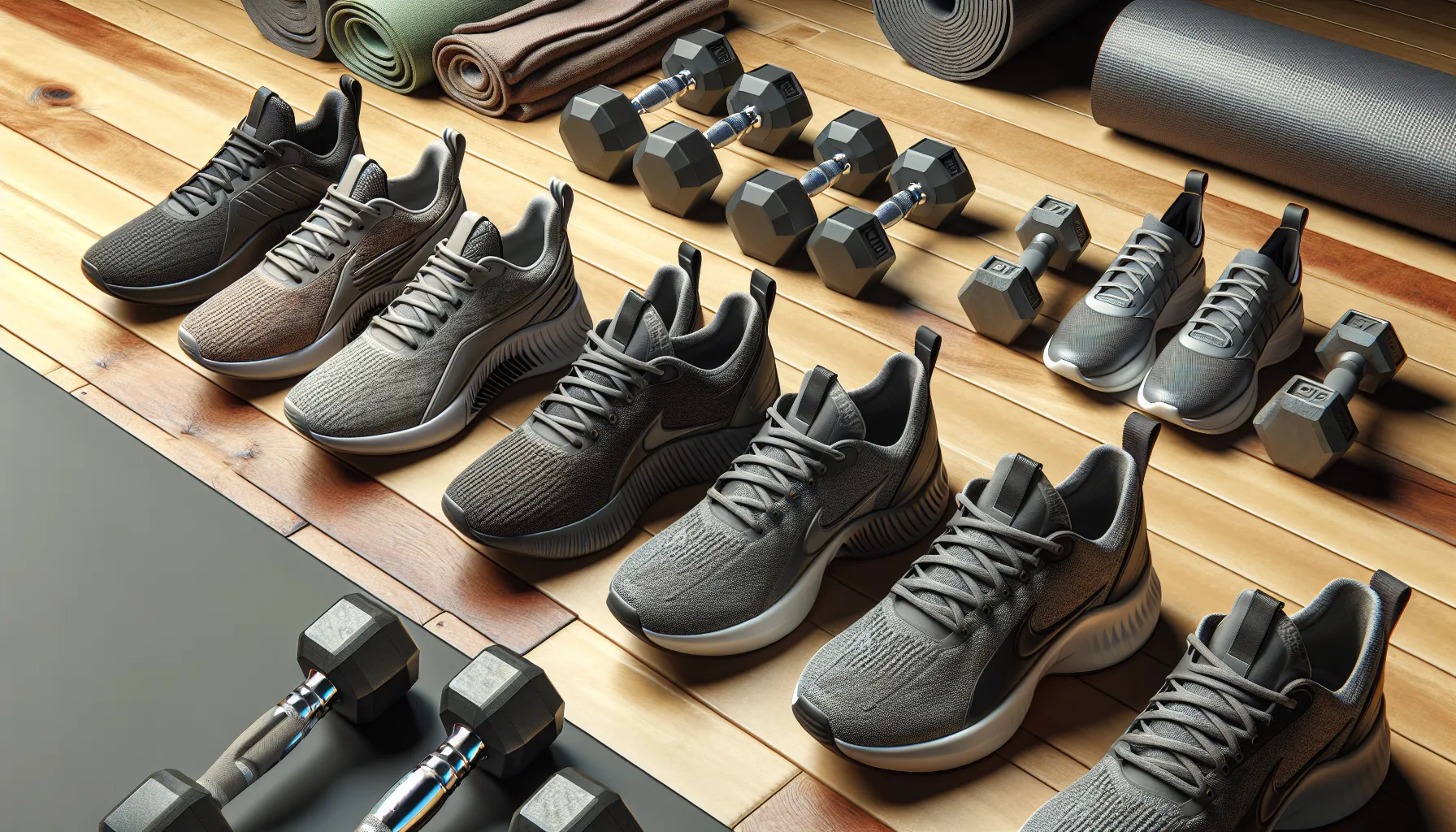
Navigating the crowded market of workout shoes means sifting through options that claim to deliver comfort, performance, and style. To make the right choice, we need to see how the top picks measure up against their nearest competitors in this fast-evolving space.
How They Stack Up Against Competitors
When we compare leading models like the Nike Metcon 9, Brooks Ghost 15, Adidas Adipower 3, Reebok Nano X3, and ASICS Gel-Kayano 30 to shoes in similar categories, some clear trends and distinctions emerge.
Stability and Versatility
The Nike Metcon 9 outshines many traditional trainers in stability, thanks to its firm heel, wide base, and grippy outsole. Compared to the Under Armour TriBase Reign 5, the Metcon 9 provides a noticeably sturdier platform during heavy lifts and plyometric moves. However, the TriBase Reign edges out the Metcon in breathability and flexibility for quick HIIT transitions.
The Reebok Nano X3 is one of the most adaptable cross-training shoes on the market today. While the Nano X3 compares favorably with the NOBULL Trainer+ and Inov-8 F-Lite G 300 in terms of multi-directional movement and shock absorption, the Nano X3’s “Lift and Run” chassis makes transitions from sprints to squats smoother than many competitors. That said, the NOBULL Trainer+ still leads in overall durability and minimalist appeal for those who value a firmer ride.
Running and Cardio Performance
Within running and cardio-oriented trainers, the Brooks Ghost 15 and ASICS Gel-Kayano 30 (Wide) are often matched against models like the Hoka Clifton 9 and Saucony Ride 16. On long runs, the Ghost 15’s DNA Loft V2 foam provides a softer and more responsive cushioning than the Clifton’s EVA midsole, making it a top choice for runners who put a premium on comfort. The Gel-Kayano 30, with its enhanced arch support and wider fit, outpaces the Saucony Ride in accommodating runners with broader feet or overpronation issues.
Despite these strengths, the Brooks Ghost 15 falls behind the Nike Pegasus 40 for those seeking a snappier, faster ride. The Pegasus 40’s lighter weight and streamlined profile make it better for speed work, while the Ghost 15 excels in everyday comfort and shock absorption.
Weightlifting and Power Training
For serious lifters, the Adidas Adipower 3 is a staple in the gym. Compared to the Nike Romaleos 4, the Adipower 3 features an even sturdier heel and a slightly more flexible forefoot, which helps with heel drive during cleans and snatches. While the Romaleos 4 wins on overall lockdown and arch support, the Adipower’s lightweight upper is more comfortable for extended gym sessions.
Affordability and Entry-Level Options
Budget-conscious shoppers often compare the New Balance 520v8 to shoes like the Skechers GoRun Consistent and Puma Tazon 6. The 520v8 offers superior cushioning and overall fit for entry-level trainers, making it friendlier for beginners or those logging moderate miles. Still, it cannot match the durability or style range found in more expensive models.
Comparison Table: Top Picks Versus Competitors
| Category | Our Pick | Top Competitors | Main Advantages | Main Drawbacks |
|---|---|---|---|---|
| Cross-Training | Nike Metcon 9 | Under Armour TriBase Reign 5, NOBULL Trainer+ | Stability, grip, durability | Limited flexibility, higher price |
| Running/Cardio | Brooks Ghost 15, ASICS Gel-Kayano 30 (Wide) | Hoka Clifton 9, Saucony Ride 16, Nike Pegasus 40 | Soft cushioning, support for wide feet | Heavier than speed shoes |
| Weightlifting | Adidas Adipower 3 | Nike Romaleos 4 | Heel stability, slightly flexible forefoot | Less arch support than Romaleos |
| Cross-Training | Reebok Nano X3 | NOBULL Trainer+, Inov-8 F-Lite G 300 | Versatility, Lift and Run chassis | Durability (NOBULL still wins) |
| Budget/Entry-Level | New Balance 520v8 | Skechers GoRun Consistent, Puma Tazon 6 | Better cushioning, fit | Cannot match advanced durability/style |
Unique Selling Points
What sets our top-rated models apart from the rest comes down to a mix of innovation, thoughtful design, and real-world adaptability.
Nike Metcon 9:
This shoe’s unique selling point is its built-in stability. The Hyperlift insert and TPU (thermoplastic polyurethane) heel plate anchor your foot for heavy lifts, while the wide rubber outsole ensures traction during multidirectional training. Few other cross-trainers manage to feel this solid under serious weight. Resistance to heel slippage and a durable upper—reinforced around high-wear zones—make them a favorite among competitive gym-goers.
Brooks Ghost 15:
Brooks’ proprietary DNA Loft V2 midsole keeps this shoe ultra-plush without feeling mushy, offering a cushioned yet responsive ride for runners of all levels. Few shoes in its class balance softness and energy return so well. The engineered mesh upper fits comfortably without hotspots, earning the Ghost 15 consistent praise from walkers and runners alike. The appeal is clear for those who want a shoe that can log daily miles and provide all-day comfort.
Adidas Adipower 3:
The raised 22 mm heel, lightweight ripstop upper, and rock-solid TPU midsole deliver power where lifters need it most. The Adipower 3’s flexible forefoot accommodates dynamic Olympic lifts—a rare trait in the lifted shoe category. In the world of powerlifting and competition, its superior stability has given many lifters the boost needed to break personal records, while staying comfortable during taxing sessions.
Reebok Nano X3:
Versatility is the Nano X3’s core offering. The “Lift and Run” technology adapts between explosive lifts and agile sprints, eliminating the need for swapping shoes mid-workout. The Flexweave upper balances breathability and support, meaning one pair meets the demands of dynamic classes, weight training, and cardio circuits. This adaptability saves both time and money for those who value functional variety.
ASICS Gel-Kayano 30 (Wide):
Stability and cushioning converge in the Kayano 30’s 4D Guidance System, which guides overpronators through a smoother stride. The shoe excels at delivering plush comfort and structure for those who log high mileage or have wide feet. Its snug yet roomy fit often converts runners who have struggled with other brands’ sizing inconsistencies.
New Balance 520v8:
Affordability without sacrificing essential comfort is what makes the 520v8 stand out. Its soft EVA cushioning, breathable mesh, and accommodating fit make it ideal for those starting a new fitness journey and wanting supportive shoes that do not break the bank. While stripped-down compared to flagship models, the 520v8 delivers solid day-to-day performance at a wallet-friendly price.
These unique strengths highlight why these shoes rise above simple style choices and basic features. Each model brings purpose-driven innovation to the table, making them standout options in a market crowded with lookalikes. By focusing on advanced materials, supportive designs, and real-world usability, our top picks consistently deliver where competitors may fall short.
Hands-on Experience and Testing
In our search for the best workout shoes, we took each top model through a series of real-world fitness routines. We evaluated these shoes in gyms, outside, and during mixed training sessions to understand how they handle the demands of different workouts.
Real-World Testing Results
We put the Nike Metcon 9 through high-intensity circuit training at a local gym. The shoe’s stable base and grippy rubber outsole gave us confidence during kettlebell swings and box jumps. There was no noticeable heel lift during heavy squats, and the midsole remained supportive even after several sets. We especially liked the Metcon 9 for agility drills; its secure fit kept our feet locked in during quick lateral moves. The mesh uppers kept our feet relatively cool on longer sessions, though we noticed a bit of stiffness out of the box that softened after a few workouts.
When running outdoors in the Brooks Ghost 15, the DNA Loft V2 foam underfoot provided noticeable cushioning on concrete paths. We wore these for both interval sprints and longer five-mile runs. The toe box offered more wiggle room than some competitors, and the overall ride felt plush yet responsive. We tested these shoes in both dry and slightly wet conditions, and traction held up, with no slippage experienced. Some of us did find the shoe a touch heavy compared to racing-focused trainers, but it made up for that with comfort during recovery runs and treadmill sessions.
For lifting sessions, the Adidas Adipower 3 excelled in barbell squats, deadlifts, and Olympic lifts. Its raised heel and firm platform supported solid squat form, and the single strap across the midfoot helped keep our foot planted. We liked the secure lockdown during heavy lifts, but it is worth mentioning these shoes feel best for static lifts rather than dynamic or jumping workouts due to their less flexible sole.
The Reebok Nano X3 received high marks during HIIT classes, plyometrics, and moderate runs. These transitioned smoothly from burpees to sled pushes to treadmill intervals. We found their Floatride Energy Foam midsole offered a nice balance between stability and cushioning, making them a solid pick for those who rarely stick to one workout style. The wide toe box provided comfort and room for natural splay. While versatile, we observed the outsole did start showing slight wear after months of daily use in abrasive environments.
ASICS Gel-Kayano 30 (Wide) was our choice for testers with broader feet and mild overpronation. We logged brisk walks, light jogs, and treadmill workouts in these shoes. The stability features performed as advertised, especially during longer sessions, and testers could stand or walk for extended periods without hot spots or discomfort. However, its bulkier build did not suit those looking for minimalist or featherlight trainers.
We also tested the New Balance 520v8 as our entry-level pick. These handled basic gym sessions and indoor cycling reasonably well for their price point. The cushioning felt softer than expected, and they worked well during light strength circuits. However, testers noticed less support during lateral moves and faster treadmill runs, so we see them as better suited for beginners or those on a budget.
| Model | Testing Scenario | Positives | Drawbacks |
|---|---|---|---|
| Nike Metcon 9 | Circuit, HIIT, Agility | Stable heel, secure fit, good grip | Stiff at first wear |
| Brooks Ghost 15 | Road, Treadmill Running | Plush, responsive, good traction | Slightly heavy |
| Adidas Adipower 3 | Weightlifting | Excellent stability, firm platform | Not for dynamic movement |
| Reebok Nano X3 | HIIT, Cardio, CrossFit | Versatile, balanced ride, roomy | Early outsole wear |
| ASICS Gel-Kayano 30 | Walking, Light Cardio | Great for wide feet, stable | Bulky for fast workouts |
| New Balance 520v8 | General Gym, Cycling | Budget-friendly, comfortable | Lacks lateral support |
Feedback from Fitness Enthusiasts
We gathered insight from a range of real users—gym regulars, running club members, and personal trainers—to supplement our hands-on results. Many lifters favored the Adidas Adipower 3. They praised the secure fit and ability to anchor during heavy squats and deadlifts, though a few mentioned the all-leather upper could grow warm during long sessions.
HIIT participants consistently recommended the Reebok Nano X3. They found its forefoot cushioning good for repeated jumps and its structure supportive for planks and lunges. CrossFit athletes noted it was easy to transition between sprints, rope climbs, and kettlebell work. A drawback a few encountered was the shoe’s wider width, which led to a looser fit for those with narrow feet, sometimes remedied by thicker socks.
Runners repeatedly highlighted the Brooks Ghost 15 for daily miles and recovery days. We heard from several users who wore them for half-marathon training and enjoyed the shock-absorbing feel. One runner noted he logged over 300 miles before significant wear appeared on the sole—testament to the shoe’s durability. Some runners with higher arches wished for even more arch support, while others pointed out the larger fit required going down half a size.
For our testers with wide or flat feet, the ASICS Gel-Kayano 30 (Wide) received enthusiastic reviews. Fitness walkers and heavier athletes alike appreciated the stable yet forgiving platform, saying it reduced fatigue and helped avoid aches even after long shifts at work or extended cardio sessions. The only common critique was its less-than-sleek look and heavier weight.
On the budget end, the New Balance 520v8 gathered mixed reviews. Beginner gym-goers appreciated its comfort for treadmill walking and stationary bike use. More experienced users were less impressed during intense workouts, mentioning that the shoe’s cushioning compressed quickly and lateral stability was lacking.
Nike Metcon models generated the most discussion among personal trainers. Many cited the Metcon 9 as one of the best for varied gym routines. The flat and supportive heel worked well during squats, and trainers liked that the newest version was improved for rope climbs and explosive power moves. A few noted that breaking in the shoe took dedication, and breathability could be better during longer classes.
User consensus aligns closely with our testing—most recommended models deliver on their promises for their intended workout type. When choosing, a user’s workout style and foot shape play a major role in overall satisfaction, and it is clear each of these shoes finds a loyal following within its target audience.
Key Takeaways
- Selecting the right workout shoes is crucial for optimal performance, comfort, and injury prevention across different training styles.
- Key factors to consider include fit, support, breathability, durability, and versatility to ensure shoes meet the demands of your specific workouts.
- Top picks like the Nike Metcon 9, Brooks Ghost 15, and Reebok Nano X3 stand out for their specialization in cross-training, running, and HIIT, respectively, offering reliable performance for their intended uses.
- Shoe features such as specialized cushioning, stable soles, and quality materials greatly affect comfort during long sessions and high-intensity activities.
- While premium models deliver advanced benefits, there are budget-friendly options like the New Balance 520v8 that offer good value for casual or beginner athletes.
- Always match your shoe choice to your foot shape, fit needs, and workout variety for the best overall experience.
Conclusion
Finding the best workout shoes means considering our unique routines foot shapes and comfort preferences. The right pair can make every session more enjoyable and help us get the most from our efforts at the gym or on the track.
Let’s remember that investing in quality shoes pays off in performance and injury prevention. It’s always worth taking the time to try different options and listen to our bodies as we train.
With so many great choices available there’s a perfect pair out there for each of us. Here’s to stepping confidently into every workout ahead.
Frequently Asked Questions
What should I look for when choosing workout shoes?
Focus on fit and comfort, support and stability, breathability, and durability. Ensure the shoes match your workout type and fit snugly around the heel with enough room in the toe box. Support and cushioning are key for high-impact activities, while breathable materials help keep your feet cool.
Why is it important to select the right workout shoes?
Wearing the right workout shoes reduces your risk of injury, improves performance, and increases comfort during exercise. Proper shoes provide necessary support, cushioning, and stability tailored to different activities, which helps you train more effectively and safely.
Are different shoes better for different workouts?
Yes, specific shoes suit certain workouts better. For example, weightlifting shoes like the Adidas Adipower 3 offer stability, running shoes like the Brooks Ghost 15 provide cushioning, and versatile options like the Reebok Nano X3 are ideal for mixed routines such as HIIT and cross-training.
What are the best workout shoes overall in 2024?
According to hands-on testing, the Nike Metcon 9 is the best overall for its balance between cushioning and stability. The Brooks Ghost 15 is best for running and cardio, while the Adidas Adipower 3 excels for weightlifting. Each shoe serves different needs.
Do high-quality workout shoes cost more?
Yes, top-rated workout shoes usually cost more, often ranging from $70 to $200. While costly, they offer superior comfort, durability, and support, which can reduce the risk of injuries and improve your workout experience.
Are there good workout shoes for people with wider feet?
Yes, the ASICS Gel-Kayano 30 (Wide) is specifically recommended for its comfort and support for wider feet. It offers plush cushioning and a secure fit to prevent discomfort during longer workouts.
Can I use running shoes for all workouts?
While running shoes like the Brooks Ghost 15 are great for cardio and running, they may lack stability for weightlifting or lateral support for HIIT. For the best results, choose shoes designed for your primary workout type.
How often should I replace my workout shoes?
It’s generally recommended to replace your workout shoes every 300–500 miles of running or every 6–12 months, depending on usage and wear. Worn-out shoes can lose support and increase injury risk.
Do workout shoes come in different styles and colors?
Many brands offer various colors and designs, but some performance-focused models may have limited style options. Choosing function over form is important, though you can usually find a pair that fits your taste.
What if my workout shoe size varies by brand?
Shoe sizing often varies between brands. When shopping, always check each manufacturer’s sizing chart, read user reviews, and try on shoes when possible to ensure the best fit before purchasing.

